2 Week Thailand Itinerary For First Timers: Bangkok, Phuket & Chiang Mai
The perfect 14 day itinerary for your first trip to The Land of Smiles
THAILAND
Adam Shaw
3/22/202513 min read
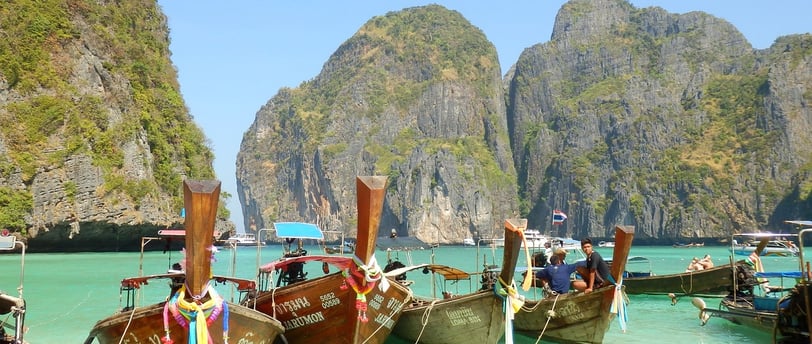

My first trip to Thailand was back in 2017, and I completely fell in love with the country, hence 8 years later it is now where I call home. The country has so much to offer, with friendly people, beautiful beaches, a diverse food scene, affordable luxury hotels and stunning natural landscapes.
When planning a trip to Thailand, there is a lot to consider. If you are a beach bum, you may want to concentrate on visiting the islands like Koh Samui, Ko Lanta, Phi Phi or my personal favourite, Ko Lipe. If you enjoy city breaks more, then Bangkok would be the best place to spend most of your time, which has some fantastic restaurants, plenty of shopping and an incredible nightlife.
In my opinion, I think it is best to experience a variety of everything the country has to offer, for your first trip. This 14 day plan mixes Bangkok's buzz, Phuket's beaches, and Chiang Mai's culture. You'll get to see temples, go island hopping, explore the markets and sample some amazing street food.
Key Takeaways
Covers 14 days split between Bangkok, Phuket, and Chiang Mai
Includes transportation tips between major cities
Highlights and must see attractions
Features budget friendly and luxury options for hotels
General tips
Why Thailand Is Perfect for First Time Visitors to Southeast Asia
Thailand is a great place to start if you are visiting Southeast Asia for the first time. It offers adventure, relaxation and some amazing sights. The transport infrastructure makes it very easy for exploring, with the budget friendly internal flights, the sky train system in Bangkok, regular ferries to the islands and the iconic tuk-tuks in each city.
The Land of Smiles: Thai Hospitality
Thailand is known as The Land of Smiles, and for good reason, as it is one of the friendless countries I have ever visited, from the moment you step off the plane, the kindness of the Thais make you feel extremely safe and welcome.
Some basic useful phrases for when you arrive are;
Sawadee Ka (female) or Sawadee Krup (male) = Hello
Khob Khun Ka (female) or Khob Khun Krup (male) = Thank you
Best Time to Visit Thailand
The best months to visit Thailand for good weather are November through to February (high season). These months have dry sunny days, with cooler temperatures. It's perfect for seeing Bangkok's temples, Phuket's beaches, and Chiang Mai's mountains. It does however have more tourists in these months and hotels can be slightly more expensive.
Low season, or rainy season as some call it, is from May–September. These months have many days with cloudy skies and rain. But typically there are less crowds and hotels are cheaper. For Chiang Mai, it is advised to skip February–April because of air pollution, due to smoke from fires, from farmers burning crops.
I personally like the months March-April and October-November, as the weather is still pretty good, hotels are slightly cheaper and there are fewer tourists. However, be aware that Songkran (Thai New Year) occurs in the middle of April every year. This is a water festival and things get pretty crazy with water fights in the streets, so if this is not your scene it is best avoided, but if you want to embrace it, it is a unique and very fun experience!
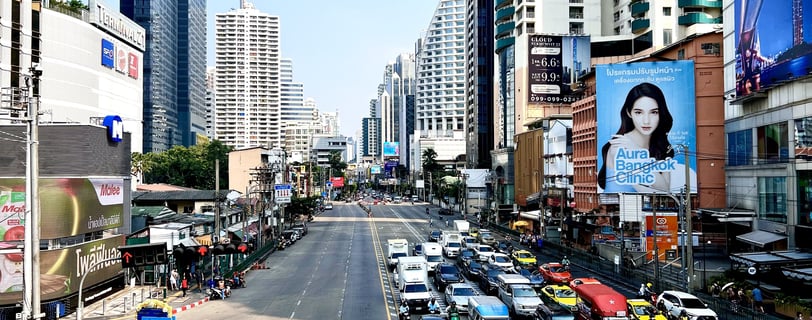

Planning For Your Trip: Visas, Vaccinations, and Packing Tips
It is important to check the visa requirements for Thailand before you start your trip, to prevent any issues on arrival. The Thai government are known to regularly change the requirements. At the time of writing (March 2025) UK and US citizens for example, can enter Thailand visa free for up to 60 days, however there has been suggestions recently this may reduce back to 30 days soon. If you wanted to stay longer than this, then 180 day tourism visa's are available. Check the Thai embassy website for the latest on Thailand visa requirements. Make sure your passport is valid for at least six months and it is important to show an outbound flight ticket when you arrive at immigration.
Health Preparations and Travel Insurance
It is a good idea to see a travel clinic for shots against hepatitis A and typhoid 6-8 weeks before you depart.
For peace of mind, it is always a good idea to get travel insurance for any holiday abroad. I find SafetyWing one of the best to use.
Packing Essentials For Each Destination
Bangkok
Shorts and breathable cotton clothes, quick dry towels and temple appropriate attire (will need to cover shoulders and knees). If you are wanting to experience fine dining when in Bangkok, you will need trousers in most upscale restaurants and some rooftop bars.
Phuket
Swimwear, sunglasses, sunscreen and waterproof phone case.
Chiang Mai
Light layers, long pants for temple visits and thermal wear for mountain trips.
It's a good idea to carry a sarong for temple visits, as it is important not to wear revealing clothes near sacred places.
Currency and Budgeting
All the main Thai ATMs take major cards to withdraw baht. I always find I get a better rate bringing my own currency over and changing it at one of the many currency exchanges that are available. SuperRich is normally one of the most competitive.
When it comes to daily expenses, it of course all depends what you want to do on your trip, because you can go very extravagant or be very budget conscious. However, on average and hotels aside, I would budget $50-70 a day in Bangkok/Phuket and $40-50 a day in Chiang Mai (per person). You can use apps like Grab or Bolt for taxi's, which are a good idea to get a fixed price for where you want to go.
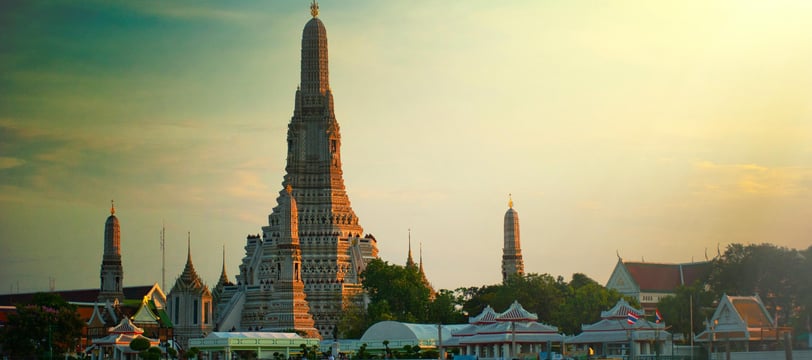

2 Week Thailand Itinerary
This itinerary covers three regions: Bangkok for 4 days, Phuket for 5, and then Chiang Mai for the remaining 5:
Day 1-4: Bangkok’s Grand Palace, Wat Arun, and a day trip to Ayutthaya
Days 5-9: Phuket’s Patong Beach, Phi Phi Islands tours, and James Bond Island boat trips
Days 10-14: Chiang Mai’s night markets, Wat Phra Singh, and Doi Suthep temple
If you wanted to make some changes, then you could swap Phuket for Krabi for example. Krabi is a bit more relaxed then Phuket. But you can use this guide as a starting point, and then make it your own if you wish.
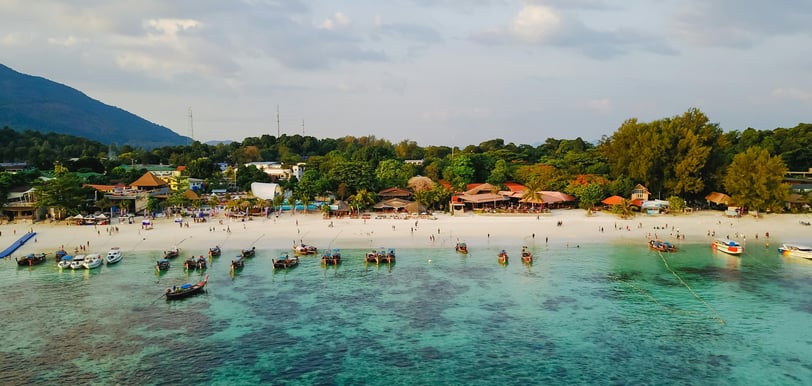

Days 1-4: Exploring Thailand's Capital, Bangkok
Start your trip by exploring the vibrant capital of Bangkok, which is absolutely full of life and never a dull moment. You will get a nice blend of culture and buzzing city life. These four days will include top sights, ancient temples, transport suggestions and some shopping.
Day 1: Arriving
Bangkok has 2 international airports, Don Mueang and Suvarnabhumi. Don Mueang is to the north of Bangkok and is generally used for Asia and domestic flights. If you are travelling from Europe or the US you are most likely to arrive at Suvarnabhumi. Once arrived, if you haven't already arranged transport, you can either head to the taxi rank on the ground floor (make sure the driver has the meter is on) or download the Grab app to book yourself a car. There is also an Airport Rail Link on the lower ground floor, which is cost effective to use.
For your first time, the best areas to stay are in Sukhumvit or Silom. Try to book your hotel near the BTS skytrain system for ease of getting around.
Check out this link for best hotels in Sukhumvit.
For your first day, relax and take in the sites with a Chao Phraya river boat ride. Then, visit the Jim Thompson House Museum, which is an iconic colonial-era building, housing the art collection of the late American businessman and architect James H.W. Thompson. This is located near the ferry terminal in Siam and the National Stadium BTS.
Day 2: Grand Palace and Wat Arun
Start your day early to avoid crowds at Bangkok temples, like the Grand Palace, a complex of buildings and former royal residence. Remember to dress modestly and ensure shoulders are covered. You can buy tickets from trip.com before you depart.
Once you have visited the Grand Palace, take a short walk to the pier where you can take a 3 minute ride on the Chao Phraya Express Boat over to Wat Arun.
Afterwards, a couple of great spots to grab a drink or something to eat at sunset are, ARUN Restaurant or Sala Rattanakosin Eatery, taking in beautiful views of Wat Arun.
Day 3: Markets & Shopping Malls
Start at Damnoen Saduak floating market (best by train from Bangkok) or Khlong Lat Mayom for a more local feel. In the afternoon, visit the spectacular Siam Paragon mall for luxury brands. Then, enjoy Asiatique, a mix of markets, shops and restaurants along the riverside, where you can indulge in Thai favourites like mango sticky rice.
Day 4: Day Trip to Ayutthaya Historical Park
Take a taxi or the 08:00 train to Ayutthaya, the ancient capital. See Wat Mahathat's famous "stone head Buddha" and Wat Yai Chaimongkol. Remember to pack sunscreen, a hat and plenty of water for the day.
Transportation For Bangkok to Phuket
The quickest and easiest way to get from Bangkok to Phuket is to fly, which only takes about 1.5 hours. You can fly from Don Mueang or Suvarnabhumi airports with airlines like Thai Airways, Bangkok Airways, AirAsia, Nok Air, and Thai Lion Air. Prices range between $40-$90 each way, depending on season. You can check current prices at trip.com
For those on a tight budget, you can take an overnight bus (12 hours) or a train+bus combo, but this obviously eats up a lot of time.
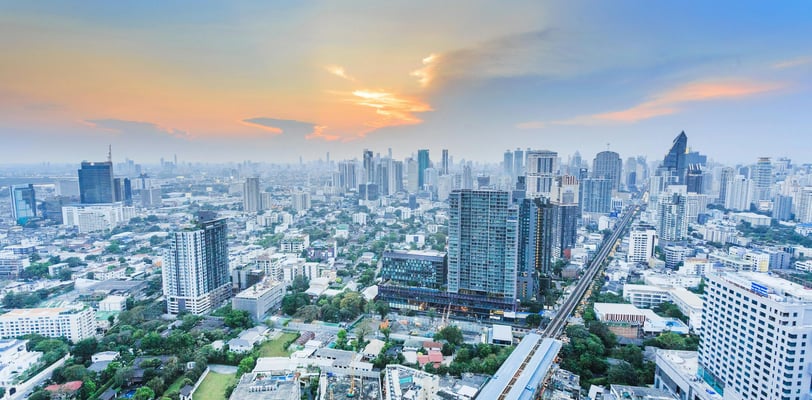

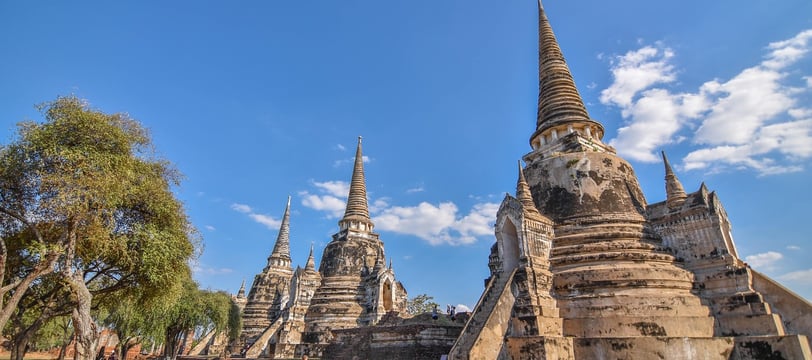

Welcome To Phuket
Phuket is an island located in the southern region of Thailand (albeit is connected by road to the mainland), and is a mix of some beautiful pristine beaches and cultural hot spots.
The main areas to stay/check out are Patong, Kata, Kamala, Karon and Phuket Town. If you are comfortable riding a motorbike, then renting one for a few days can be a great way to explore the island at your leisure.
If you are after an exciting nightlife, plenty of shopping and a wide variety of bars and restaurants, then the best place to stay is the tourist hotspot Patong. However if you want something a bit more relaxing, then Kamala or Surin are good choices.
Day 5-6: Phuket Beaches and Old Town
Start your day at the beach. Patong is lively, while Surin is quiet. Perhaps one of the best beaches I found on my trips there is Freedom Beach, which is located just south of Patong.
In the afternoon, grab a taxi or ride your bike and explore Phuket Old Town with its unique colourful buildings.
In the evening, head to Patong and check out the lively Bangla Road, which is filled with bars, shows and nightclubs. If this is not your scene though and prefer a beach club to watch the sunset, then there are a few options to choose from: Cafe Del Mar (Kamala), Kudo (Patong) or Fira (Karon).
Day 7: Phi Phi Islands
An absolute must when in Phuket, is to take a day trip to Phi Phi Islands and see Maya Bay and Monkey Beach. You can book the tours from many operators around the tourist areas. They are normally sat in little huts on the sidewalks, or you can book through most hotels. Speedboats are cheaper and usually have big groups, but private tours offer more privacy. Remember to bring sunscreen, waterproof bags and be extra careful with your belongings if you go anywhere near a monkey!
Best to book a morning tour to avoid most of the crowds, as in high season Phi Phi Islands can get very busy.
Day 8: Phang Nga Bay
Book yourself another tour to Phang Nga Bay, where you will see amazing limestone cliffs and the famous James Bond Island. It is a pretty full day as most tours include lunch, kayaking and visiting floating villages.
Day 9: Relaxation and Thai Massage
You will probably be quite worn out after your 2 days of island tours, so will be in need of some much needed relaxation. My suggestion would be to head to Patong Beach for a sunset massage and then finish with a tasty thai dinner at Naughty Nuri's Restaurant.
Transportation Guide: Phuket to Chiang Mai
The only real option is to fly from Phuket to Chiang Mai. There are a variety of airlines to choose from like AirAsia, Thai Smile, and sometimes Bangkok Airways. Flights take about 2 hours and you can check current prices through here. AirAsia is usually the cheapest and offers fares from around $40–$80.
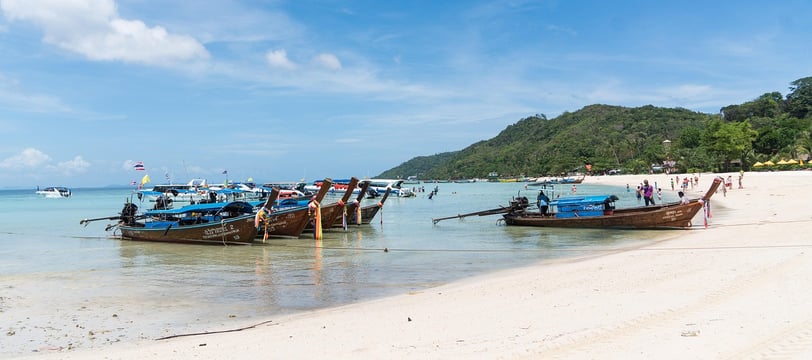

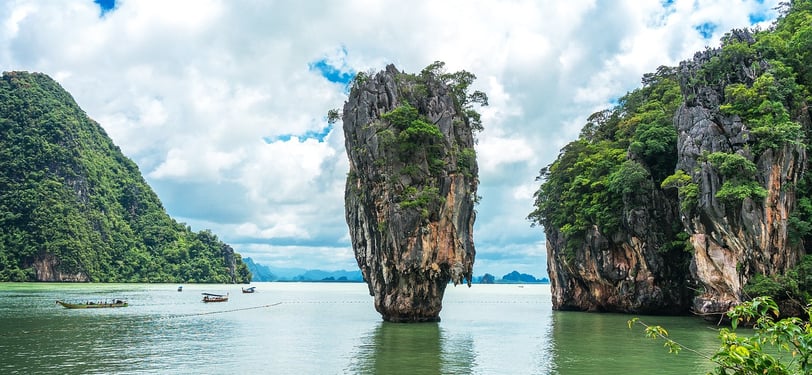

What to Expect When Arriving in Northern Thailand
The air in the northern region of Thailand is a lot cooler, and here you will get temples and mountainous landscapes, rather than having sea views or skyscraper backdrops. It is perhaps a good idea to pack some long sleeve tops, as the evenings can sometimes get slightly chilly.
I would recommend staying near Wat Phra Singh in the Old City or Nimman for trendy boutique hotels. Check out Expedia for the latest deals. You can explore cultural spots like the Sunday Night Market or Wat Phra That Doi Suthep. Chiang Mai will be a huge cultural change from Phuket and you will find the prices slightly cheaper.
Chiang Mai is known for Thai food specialties like Khao Soi at Huen Phen and spicy Nam Prik Ong at Warorot Market.
Day 10: Arriving
Chiang Mai International Airport is currently the fourth busiest airport in the country, but is a lot smaller than Bangkok's Suvarnabhumi. When exiting the airport you can use metered taxis, or order a Grab car if you have the app and head to your hotel.
You'll likely arrive in the afternoon, so would suggest taking it easy, getting a massage and ending your day by enjoying a delicious dinner at one of Chiang Mai’s famous night markets, such as the Sunday Walking Street Market (if it's Sunday) or Night Bazaar.
Day 11: Old City & Temples
Begin your day in Chiang Mai's Old City, with a visit to Wat Phra Singh, which is a 14th century Buddhist temple with a beautiful golden chedi that dominates the grounds. Just a short walk away, is Wat Chedi Luang, an impressive ancient temple that was once home to the Emerald Buddha. Afterwards, take a stroll to Tha Phae Gate and check out the nearby markets, where you can find many unique souvenirs and local snacks.
In the afternoon, grab a taxi and head up the mountains to visit Doi Suthep (officially Wat Phra That Doi Suthep), which has an impressive steep 300 step staircase, flanked by mythical serpents and offers a panoramic view of the city when you get to the top.
Finish your day with a relaxing sunset cruise on Mae Ping River.
Day 12: Nature & Culture
On Day 12, take a trip to Elephant Nature Park, a sanctuary for rescued elephants. Spend the day learning about elephant conservation, interacting with these gentle giants, and supporting ethical tourism. The park offers a more humane experience compared to other elephant camps that you may see, as this park has a focus on care and rehabilitation.
In the evening, visit the Chiang Mai Night Safari where you'll be able to see animals up close, in a safe and controlled environment.
Day 13: Adventure & Relaxation
Start your final full day with some fun at The Grand Canyon Water Park, or alternatively you can take a zipline adventure to explore the jungle from above if you're a bit more daring.
Finish the day with dinner at a beautiful riverside restaurant and enjoy the tranquil scenery. A couple of suggestions are The Riverside Bar & Restaurant or The Paak Dang Riverside Restaurant.
Day 14: Flying Home
You'll most likely need to head back to Bangkok to catch your international flight home, so allow plenty of time. Flights from Chiang Mai to Suvarnabhumi Airport take approximately 1 hour and 10 mins.
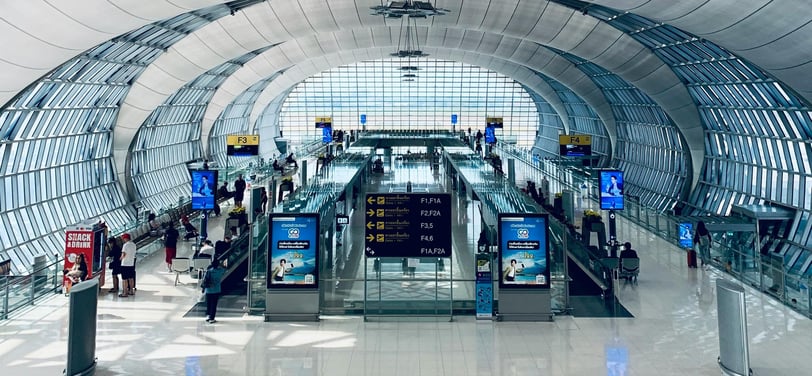

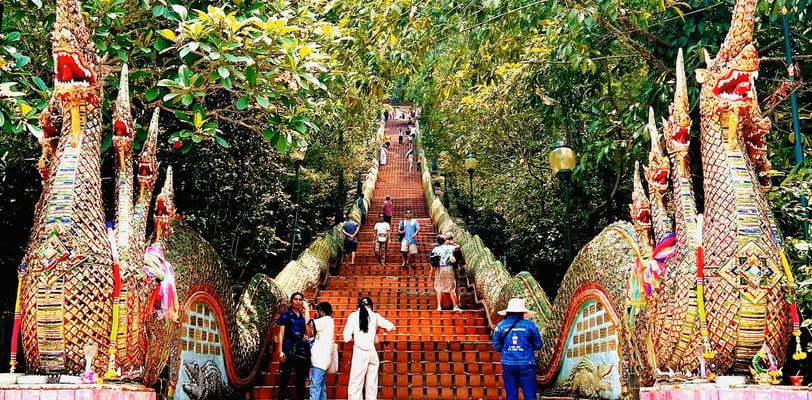

Tips for First-Time Visitors
If you are going to indulge in street food, it is best to choose stalls with long lines and locals eating there, as a sign it is well regarded.
Drink only bottled or purified water. As an extra precaution, I even use bottled water when brushing my teeth.
If you are not used to spice, then it is best to start with mild dishes. When ordering you can use phrases like "phet nit noi", which means "a little spicy", or "mai phet mak", meaning "not too spicy".
Estimated Budget for a 2 Week Trip To Thailand
When planning your travel expenses, it all depends of course on your financial situation and what you're comfortable with spending. Excluding your main flights to Thailand, budget travellers can spend between $1,200 to $1,800 for the 2 weeks. Those who prefer mid-range options might spend $2,000 to $3,000 and luxury travellers could easily spend over $4,000.
Here's a breakdown:
Accommodation: Budget travellers can save by staying in hostels, which can be as cheap as $10–$20 a night. Three and four star hotels in Bangkok and Chiang Mai can cost between $30–$70 a night. But, Phuket's coastal spots will likely be around 20–30% more in high season. Luxury hotels start at $100+ per night. Please see my recommendations for 5 star hotels in Bangkok.
Food: Street food meals are as low as $1–$5, and mid-range dinners are about $10–$20. Eating local is a great way to save money. You can of course treat yourself to fine dining, but expect to be paying in excess of $100 for 2 people. Bangkok in particular has some fantastic fine dining options and rooftop bars.
Transport: At the time of writing, flights between cities costs between $50–$100 for a round trip. Tuk-tuks and buses are $2–$15 daily. Guided tours, like Phi Phi Island trips, cost $50–$100 per person. When staying in a town for a few days I always find it cheaper to use the Grab or Bolt apps to get around.
Other fees to be aware of: Temple entry tickets ($1–$10), National Park fees when visiting some islands ($5-$10), and there will also be ATM fees. Credit cards are widely accepted at hotels and malls, but cash is preferred by small vendors. Exchange money locally for better rates. I usually find 'SuperRich' to be the most competitive.
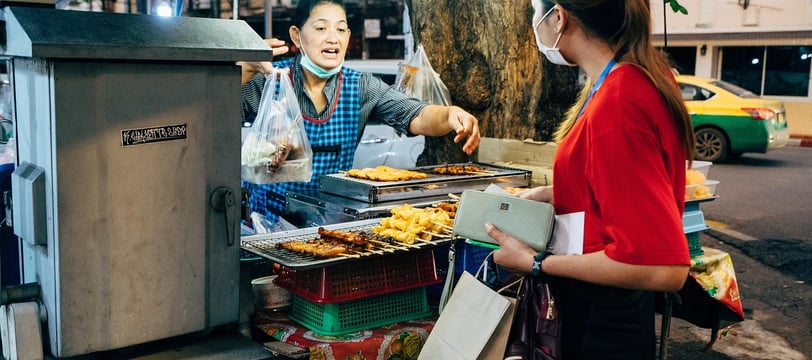

Final Thoughts
Thailand is my favourite country in South East Asia. I feel it has so much to offer and such a wide variety of options. You can experience a city break, beach holiday and hiking adventure all in one trip. Your money tends to go a lot further than most western countries and the Thai people are extremely welcoming and friendly.
So once this trip is over, I'm sure you'll be planning your next Thailand adventure. Places to consider for next time would be Krabi, Koh Samui and Hua Hin.
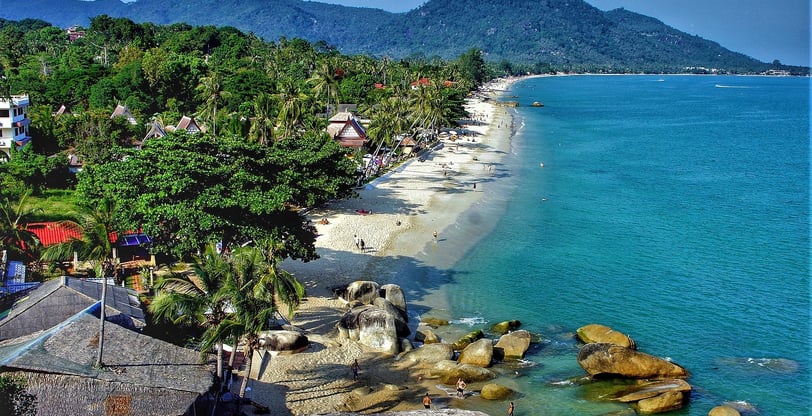

Get in touch
hello@abundantasiatravel.com
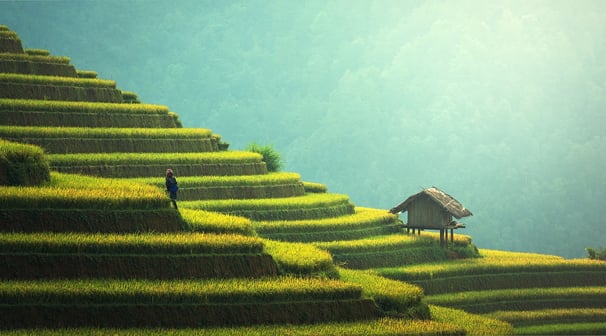

Affiliate Notice
This website uses affiliate links, meaning we may earn a commission if you make a purchase through a link.
